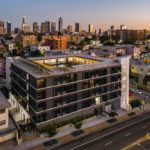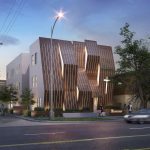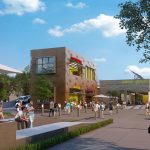In 2017, nearly 554,000 people experienced homelessness in the U.S., with one out of every five of them living in New York City or Los Angeles. Across the nation, 65% of those homeless lived in emergency shelters or transitional housing programs, while the other 35% lived in unsheltered locations, such as tents, cars, or sidewalks. Despite coordinated efforts to prevent and end homelessness across the United States, there is still not enough support for this extremely vulnerable population.
While shelter and emergency care are the most immediate forms of relief for the homeless, housing programs with counseling, support, and training can ease the suffering of homeless individuals while also empowering them to break a cycle of poverty. Additionally, the entire community benefits through a more stable workforce, decreased need for public assistance, and increased health and safety for all.
There is an abundant need for transitional housing. Meanwhile, there are many vacant spaces that can be converted into habitable, self-supporting housing. Although building projects dedicated to the homeless population can be controversial, it is a unique opportunity to be part of a housing model for social good. According to Forbes, big box stores, like Macy’s, JCPenney, and Sears are closing in record numbers. Repurposing vacant, big box stores with mixed-use and residential components is a rising trend as retail developers look for creative ways to fill underutilized retail spaces. The need for transitional housing and the availability of vacant, big box stores provides a unique opportunity to address both issues.
What is Re-Habit?
The Re-Habit concept repurposes the 86,000 sq. ft. footprint of a typical vacant, big box store by converting it into seven, smaller retail spaces and a full-service transitional housing center, which offers care for up to 344 single men and women. The center provides residents with a variety of supportive services, from counseling to job training.
Residents who exhibit progress in the housing and counseling programs can receive job training and work in one of the many, on-site retail spaces, ranging from thrift stores to coffee shops. The retail stores range from 1,000 sq. ft. to 10,500 sq. ft., and a photovoltaic façade design supports energy efficiency in the building. Rotational chores, like working in the kitchen or keeping the dining hall clean, generate resident investment in the center’s success and further the project’s self-supporting goal. A variety of sleeping options, ranging from rooms of 5’-0” x 7’-2” bed pods to semi-private apartment units, allow residents upward mobility within the program. Residents also receive care through recreation. For instance, a rooftop basketball court promotes leisure and physical health, while a rooftop garden grows fresh produce for the on-site retail and the resident dining hall. Dedicated time and resources for personal growth helps residents to develop positive interpersonal and emotional skills. In a supportive environment that emphasizes longevity in housing, employment, health, and wellness, individuals can develop strategies for long-term self-sufficiency and self-determination.



